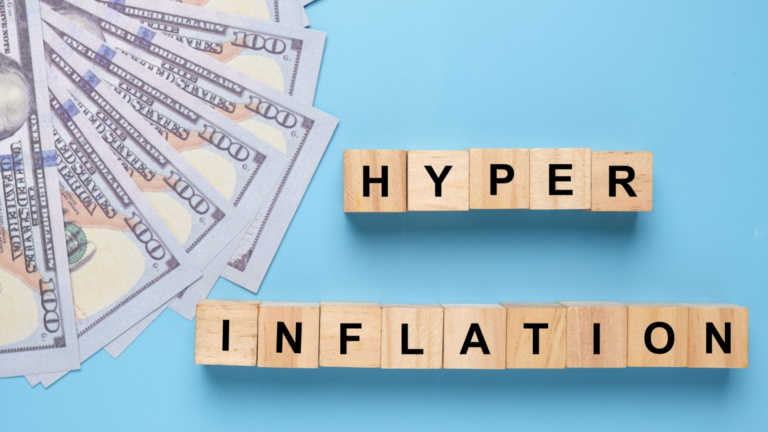As if the stock market in 2022 didn’t provide enough excitement, Wall Street institution Elliot Management got the collective blood pressure rising when warning about a possible road to hyperinflation in the U.S. Long a rallying cry within the fringes of alternative media, the famed hedge fund lent some credibility to the concept. But how realistic is this frightening scenario?
To better filter fact from fiction, it’s important to establish clear definitions. Certainly, the U.S. (and other nations) suffer from historically high inflation. For instance, as of the latest data, the consumer price index (CPI) before seasonal adjustments increased 8.2% in September. From another angle, the purchasing power of the dollar declined 5.34% this year so far.
In other words, you need more dollars to make the same equivalent purchase prior to the currency erosion. That’s a classic case of inflation. However, hyperinflation represents a different beast altogether. According to the Michigan Journal of Economics, the rule of thumb for defining hyperinflation is “50% inflation or more per month.”
“As an example to help understand what that means, let’s say a loaf of bread costs $5 in January. By the end of February, it would cost $7.5, by the end of March, $11.25, and by January of the next year it would cost $650. This is far from what the US is currently experiencing right now…”
Therefore, the idea of hyperinflation capsizing the U.S. economy seems incredibly unrealistic. Still, investors shouldn’t throw the baby out with the bath water.
Hyperinflation: Separating Fact From Fiction
To be clear, Elliot Management did not guarantee a scenario where hyperinflation becomes the norm in the U.S., thus spurring the most significant financial crisis since World War II. Rather, the hedge fund set the backdrop for “global societal collapse and civil or international strife” should circumstances extend to their extremity.
In that sense, Elliot is saying everything by saying nothing. True, reckless money printing can easily destroy economies no matter how great they are. However, the Federal Reserve has presently given zero indication that it will implement the irresponsible dovishness that would spark hyperinflation. Moving forward, the resultant tightening of the money stock should instill some concerns about deflation (i.e. recession).
However, Elliot reasonably criticizes central banks for skirting their responsibility regarding the current high inflation problem. While macro headwinds such as global supply chain disruptions didn’t help matters, the Fed and other central banks pushed down benchmark interest rates too low for too long.
For instance, Fortune cited Mohamed El-Erian, president of Queens’ College, Cambridge, who stated that while low interest rates were “once needed and effective,” such actions risked becoming
“increasingly counterproductive for the economy” and could fuel a “perfect storm” of high inflation, slow growth and financial instability.
Nevertheless, criticism of central bank policy and invoking the concept of hyperinflation may represent too much of a stretch.
Beware the Rise of Meme Economics
While the phenomenon of meme stocks — or the targeting of often-speculative investments via coordinated action on social media — introduced a fresh angle on market participation, it’s important to distinguish fads from fundamentals. Pointedly, Bloomberg presented a knock-out blow against calls for hyperinflation as merely “meme economics” — more than a year-and-a-half prior to Elliot’s dire warning.
If that wasn’t enough, The Atlantic warned about hyperinflation hype in March of 2012, almost exactly nine years before the Bloomberg post. The counterarguments strike a familiar motif: highly developed and properly functioning economies like the U.S. suffer an exponentially lower risk of hyperinflation.
Certainly, uncontrolled skyrocketing prices do occur in the modern age but never in advanced, geopolitically stable jurisdictions. Therefore, it’s not an apples-to-apples comparison to juxtapose the U.S. with Venezuela or Zimbabwe.
Though it’s not appropriate to speak in absolutes, prominent experts emphasize that the U.S. faces very little chance of incurring an apocalyptic economic implosion. On a final note, the Michigan Journal of Economics pointed out that the study of the underlying discipline has grown and become more sophisticated in the modern age. Therefore, the Fed will likely step in before doomsday bunkers and wheelbarrows of cash become a thing.
That’s not to say that people shouldn’t be worried about high inflation or possible deflation. But hyperinflation? Quantitatively, that’s too high of a bar to be a realistic proposition at this juncture.
On the date of publication, Josh Enomoto did not have (either directly or indirectly) any positions in the securities mentioned in this article. The opinions expressed in this article are those of the writer, subject to the InvestorPlace.com Publishing Guidelines.

